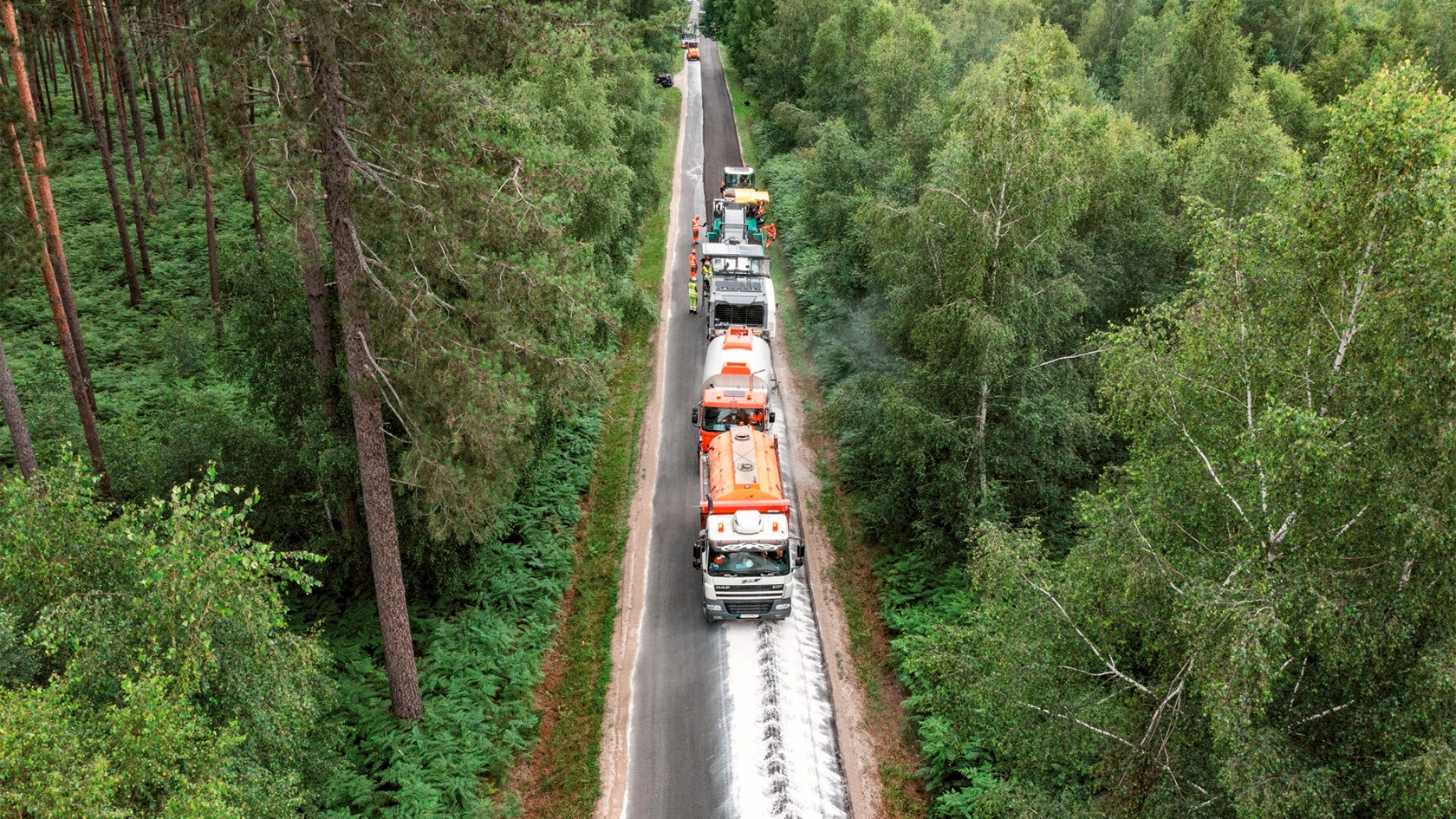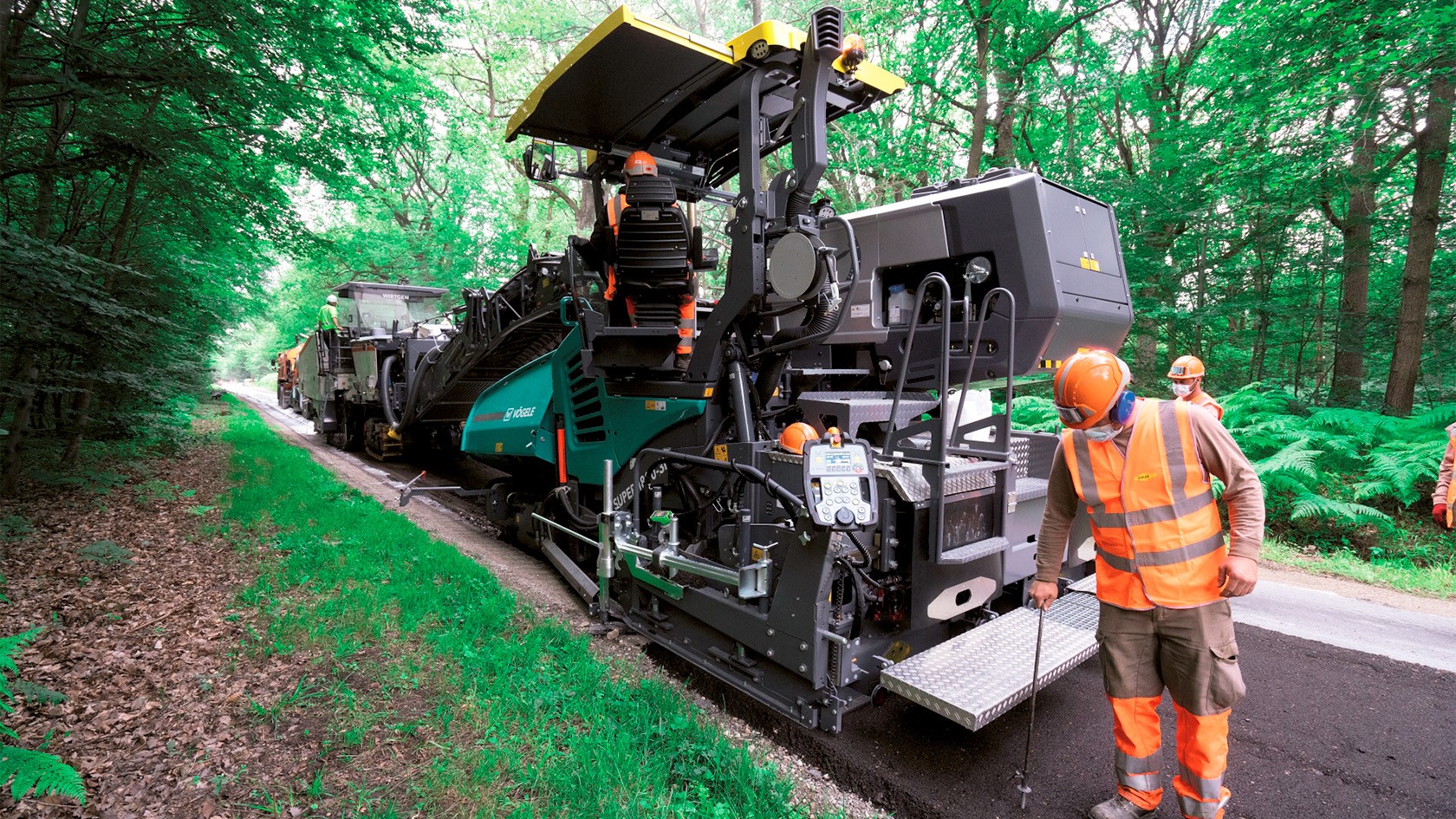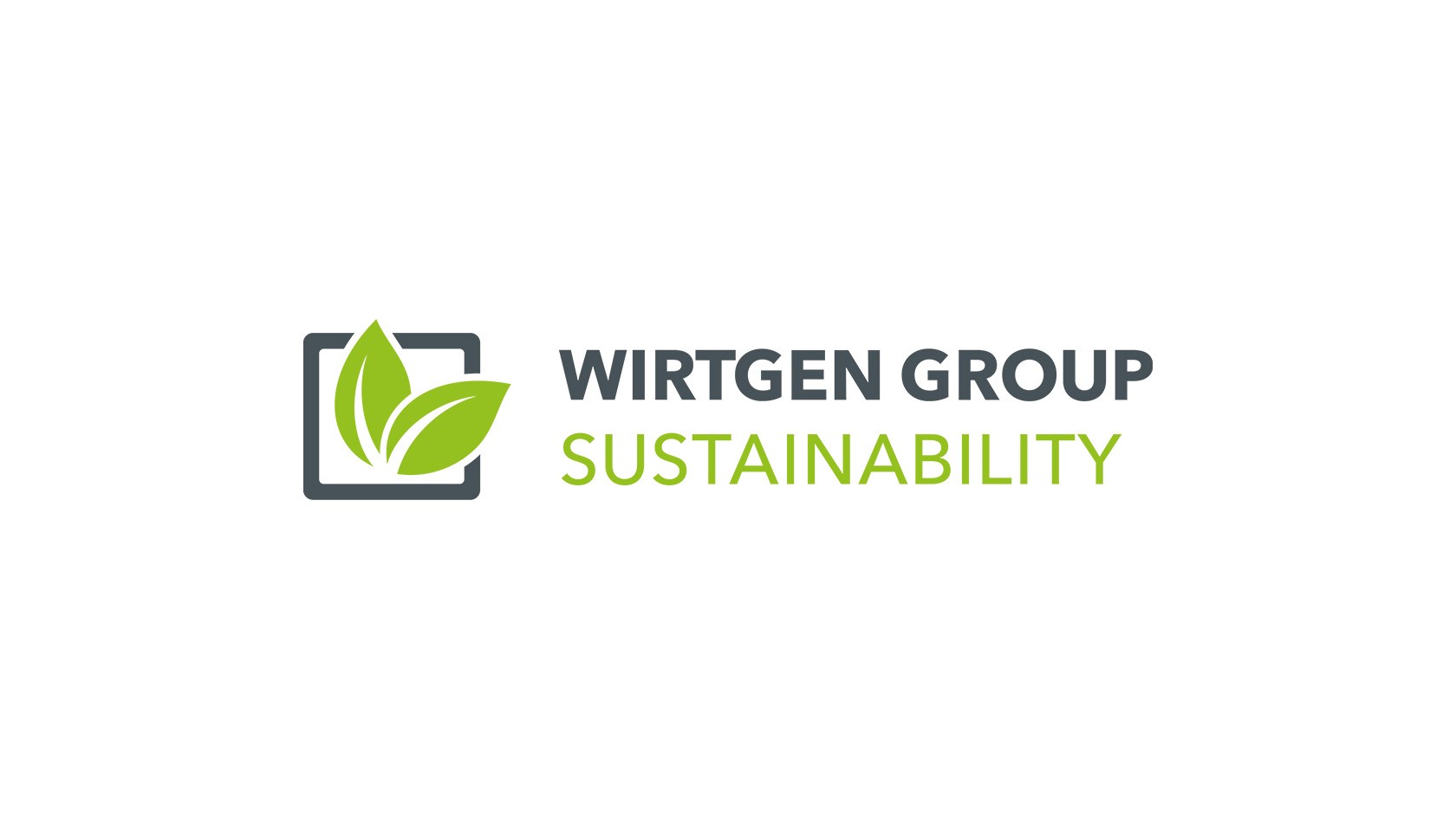Maximum Productivity of the Complete Production System from the Wirtgen Group
With the existing road pavement material and hot bitumen in the form of foamed bitumen, the Wirtgen Group production system produced a new, high-quality construction material and processed it in-place. As roads with base layers produced by cold recycling can be temporarily reopened for use by traffic immediately after final compaction, this meant that the disruption of normal traffic flow by the roadworks was able to be reduced to an acceptable minimum.
The Colas laboratory team prepared and analyzed material samples from the construction site with Wirtgen laboratory equipment before the work began. These pre-project analyses delivered the quantities of binding agents that would be required when the cold recycler began the structural rehabilitation of the road bed. As binding agents, 1% lime, 2.4% foamed bitumen and, to ensure optimal compaction, 2.5% water were mixed in.
Cold Recycler Enables Road Widening in a Single Process
The aim of the project was to widen the D111 to a width of 5.1 m over a distance of 5.7 m to improve traffic safety. The cold recycler made the widening possible in a single construction process, without the need for new asphalt surfacing material. This meant that around 500 t of raw materials and a whole construction step could be saved. In some cases, rehabilitation measures of this kind also enable communes to construct a separate bike lane, which can be a significant economic factor for a region.














